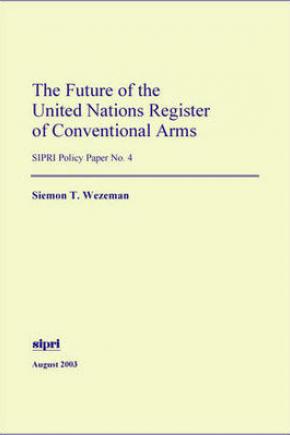The Future of the United Nations Register of Conventional Arms
The United Nations Register of Conventional Arms (UNROCA) was created by a General Assembly Resolution in 1991 and has now completed 10 years of operation. In this Policy Paper Siemon T. Wezeman identifies both the limited areas of the UNROCA's success—notably, in establishing a global norm for transparency in arms transfers—and the factors which have stopped it both from making any real headway on its original goals and from adapting itself the better to do so. His realistic conclusion is that if the UN finds itself unable (for largely political reasons) to make a radical overhaul of the UNROCA at this time, international energies might better be directed to pursuing the goals of transparency and control in regional and other specialized settings which are, in fact, fully compatible with the UNROCA's existence and aims as first defined.
1. Introduction
2. The UNROCA's first 10 years: A critical evaluation
3. Options for improvement
4. Conclusions
Appendix 1. International arms transparency measures, by country
Appendix 2. United Nations General Assembly Resolution 46/36 L of 9 December 1991

